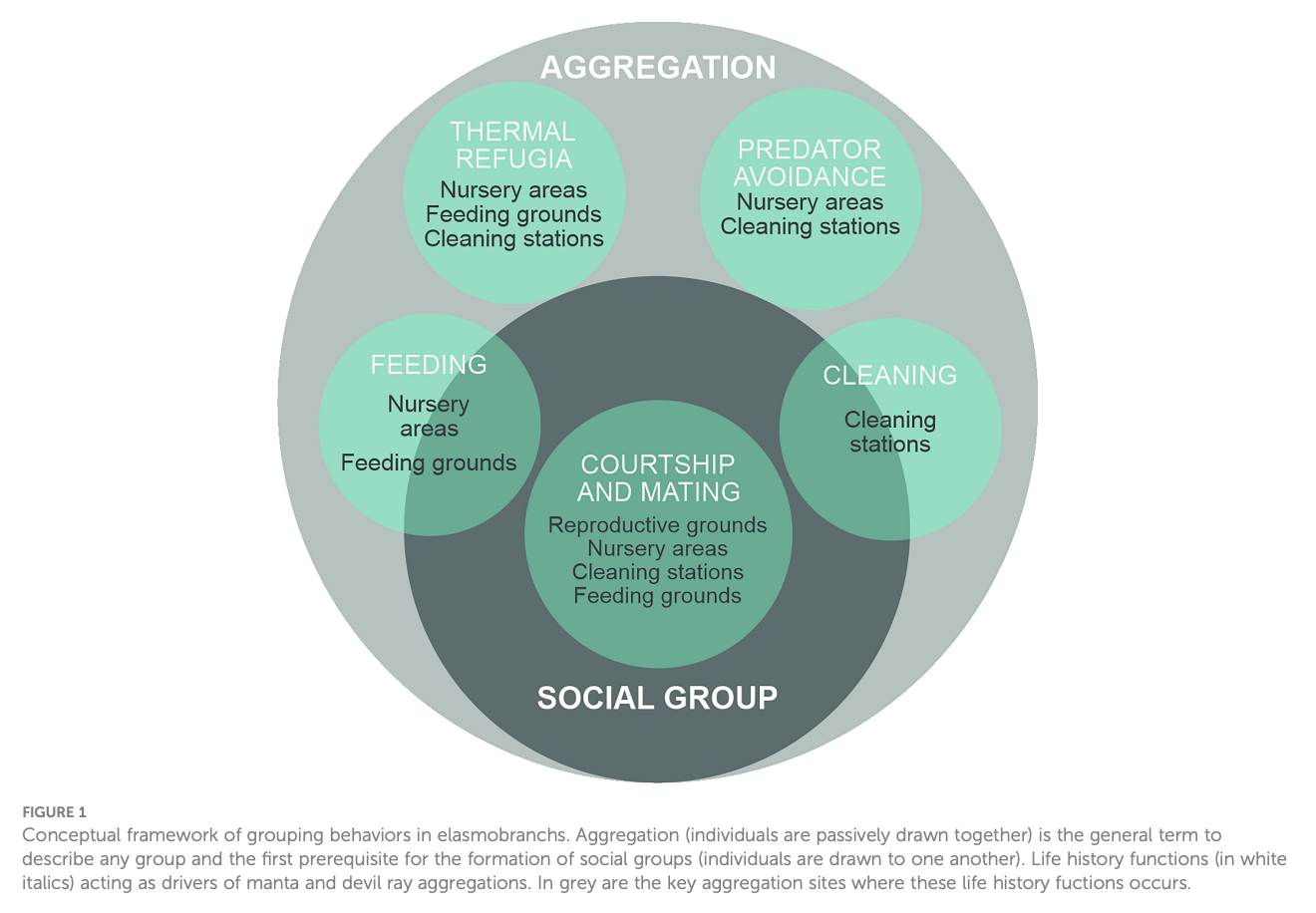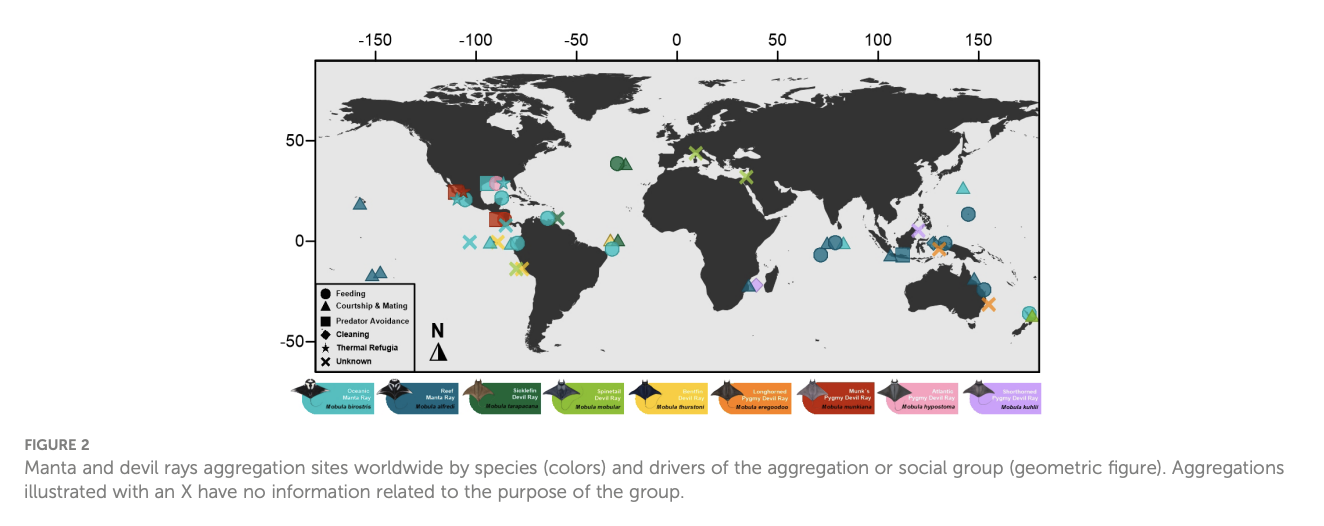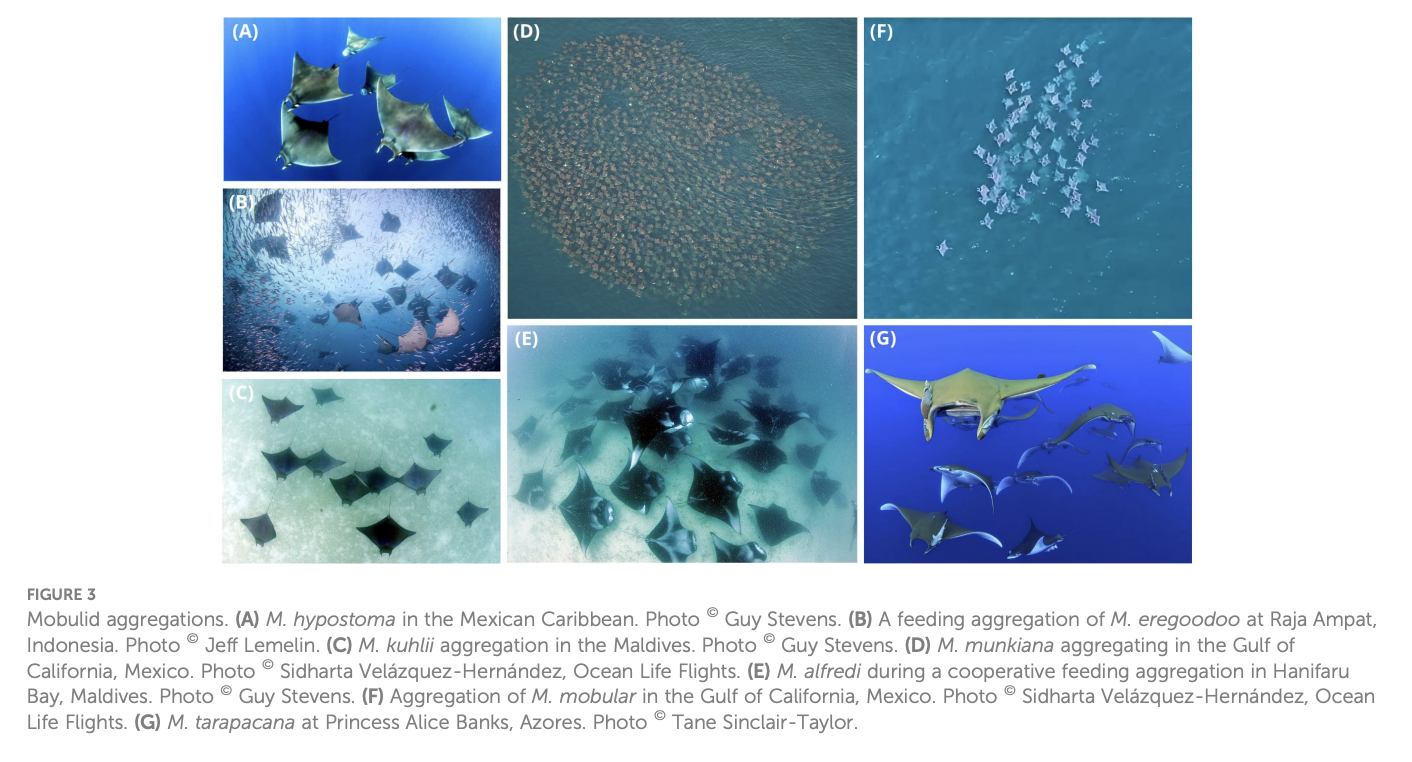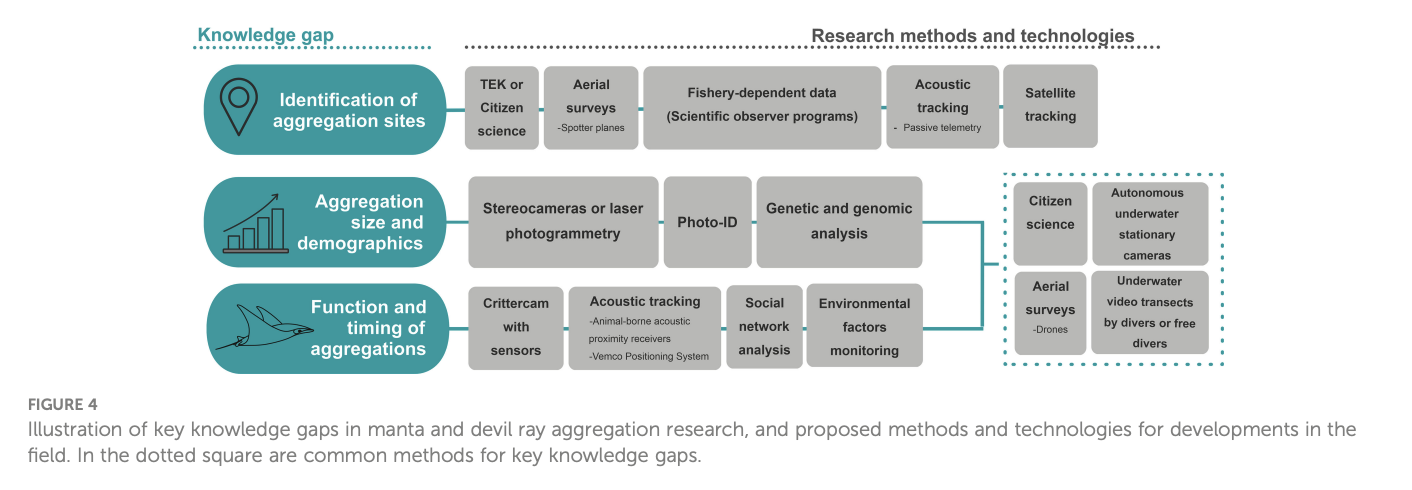Manta and devil ray aggregations: conservation challenges and developments in the field
April 2023
Marta D. Palacios, Joshua D. Stewart, Donald A. Croll, Melissa R. Cronin, Abel Trejo-Ramírez, Guy M. W. Stevens, Nerea Lezama-Ochoa, Kelly M. Zilliacus, Rogelio González−Armas, Giuseppe Notarbartolo di Sciara & Felipe Galván−Magaña
Keywords: Mobula • Grouping Behavior • Elasmobranch • Social Group • Management • Feeding • Courtship and Mating • Cleaning




Summary: Manta and devil rays are vulnerable to various threats, including fisheries exploitation, bycatch, boat collisions, and unregulated tourism. Aggregation sites for these species have been identified globally, but the terminology and drivers behind these gatherings are unclear, hampering conservation efforts. This analysis explores mobulid aggregation behaviour, defining grouping events and examining their functions, such as feeding, courtship, predation avoidance, and thermoregulation. Conservation challenges and mitigation opportunities related to aggregation sites include fisheries, tourism, spatial protection, and climate change. The study highlights research gaps and future priorities for understanding aggregation sites, demographics, and functions.
Abstract
“Manta and devil rays (mobulids) are filter feeding elasmobranchs with extreme K-selective life histories found circumglobally from temperate to tropical waters. Their vulnerability to fisheries exploitation, bycatch, boat collisions, entanglement and unregulated tourism is exacerbated by their aggregative behavior. Studies have identified aggregation sites around the world for all nine mobulid species, with these groupings varying from a few individuals to thousands. However, the terminology used to define these aggregations and the drivers underpinning them remain unclear, hindering the development of effective management and conservation strategies. Here, we analyze aggregation behavior for mobulid species, providing consistent definitions for grouping events and summarizing the existing research on drivers and environmental factors triggering these events. We find that aggregation behaviors facilitate socializing and key life history functions in mobulids, including feeding, courtship and mating, predation avoidance, cleaning, and thermoregulation. Conservation threats and management mitigation opportunities associated with aggregations sites include fisheries, tourism, spatial protection, and climate change. Finally, we highlight knowledge gaps for future research prioritization and developments in the field for the identification of aggregation sites, the study of aggregation size and demographics and the functions and timing of aggregations.”
Infographics
Author Affiliations
Instituto Politécnico Nacional
Mobula Conservation
Pelagios Kakunja A.C
The Manta Trust
Ocean Ecology Lab, Marine Mammal Institute, Department of Fisheries, Wildlife & Conservation Sciences,
Department of Ecology and Evolutionary Biology, University of California Santa Cruz
Nicholas School of the Environment
Institute of Marine Science, University of California Santa Cruz
Tethys Research Institute
Funded by
Consejo Nacional de Ciencia y Tecnología
BEIFI
Walter Munk Foundation for the Oceans
Dive Ninjas Expeditions
Fundación México Azul
Instituto Politecnico Nacional


